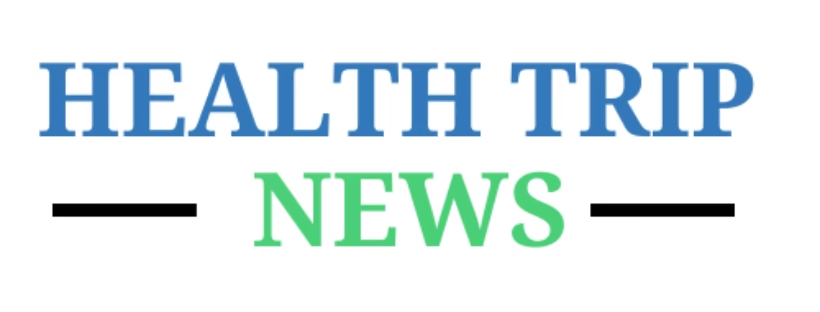Digital Twins in Healthcare: How Virtual Models Are Improving Patient Care
The health industry is experiencing seismic shifts due to the convergence of artificial intelligence, big data, and real-time analytics. Transforming Healthcare with Digital Twins is at the heart of these changes, as virtual models can replicate physical entities, such as patients, organs, and entire hospital systems. These digital replicas simulate real-world conditions, allowing medical professionals to predict patient outcomes, optimize treatments, and enhance precision medicine. As digital twin technology continues to grow in healthcare, it is set to revolutionize everything from personalized treatment plans to surgical simulations and drug development.
Understanding Digital Twin Technology and Its Applications
A digital twin is the dynamic, virtual representation of an object or system in the real world, constantly updated with data in real time. In the healthcare sector, a digital twin can mirror the anatomy, physiology, and health trajectory of a specific patient. By integrating sensor data, imaging scans, genetic profiles, and wearable device inputs, digital twins provide hyper-personalized insights that traditional healthcare models lack.
The Science Behind Digital Twins in Healthcare
Multiple data sources from electronic health records (EHRs), genomics, imaging scans, and biometric sensors are combined by high-fidelity virtual models. Patterns are determined and health trajectories are predicted by AI, which refines the model. Machine learning algorithms form the framework for analyzing patient history and environmental factors, while clinicians can forecast complications, optimize therapies, and craft designed interventions.
Applications of Digital Twins in Personalized Medicine
Digital twins enable precision medicine by simulating the response of an individual to a treatment. Doctors can thus test therapies on a patient’s virtual twin before administering them in real life, rather than following a trial-and-error approach. This is highly impactful for diseases such as cancer, autoimmune disorders, and rare genetic diseases where individualized treatment is of prime importance.
Digital Twins in Surgery: Improving Precision and Planning
Surgeons are using digital twins to enhance surgical accuracy and risk prediction. Preoperative planning now includes high-fidelity 3D simulations of patient anatomy, thus allowing for customized strategies. For example, in complex heart surgeries, cardiologists can use a virtual twin of the heart to practice interventions before making a single incision.
Digital Twins for Optimizing Disease Management
For chronic disease patients, digital twins offer continuous monitoring and predictive insights. A diabetic patient’s digital twin can track glucose levels, anticipate fluctuations, and recommend adjustments to diet and medication. Likewise, digital twin models for cardiovascular patients can simulate plaque buildup, blood flow dynamics, and the impact of lifestyle modifications.
Digital Twins in Drug Development and Testing
Pharmaceutical companies have used digital twins to revolutionize drug discovery and testing. There is no more expensive and lengthy human trial needed, as interactions between drugs and virtual patient models can be simulated. This not only accelerates the drug approval process but also reduces reliance on animal testing. It enhances the efficacy of the drug by exposing compounds to varied digital twin populations.
Digital Twins and Medical Imaging, Diagnostics
Medical imaging has largely depended on fixed scans. The digital twin gives the ability of diagnostics by using dynamic, time-sensitive models that simulate organs and tissues. In addition, artificial intelligence-powered digital twins can give early markers, such as early signs of cancer or blockage in arteries for early intervention.
Digital Twins and Preventive Care in Predictive Analytics
Digital twins shift the attitude of healthcare from reactive to proactive through predictive analytics, anticipating diseases before they occur. For instance, a digital twin of a lung can simulate the effects of smoking over time, offering preventive action before destructive damage takes place.
Hospital Management and Operational Efficiency
Beyond patient care, digital twins are optimizing hospital workflows, patient flow management, and resource allocation. For example, simulating emergency room congestion, operating room schedules, and staff availability will help hospital administrators minimize wait times and improve overall efficiency.
Remote Patient Monitoring and Telemedicine Integration
Digital twins are revolutionizing telemedicine and remote monitoring. Healthcare providers can monitor patients with chronic illnesses or post-operative conditions through virtual twins, and they can adjust treatments.
Hence, digital twins are extremely useful, especially for rural and underserved populations, where, for instance, in-person medical consultations may not be easily accessible. Moreover, these advanced simulations enable remote monitoring, allowing doctors to assess patient conditions virtually. Furthermore, they assist in personalized treatment planning, ensuring better healthcare outcomes. Additionally, digital twins enhance early disease detection, reducing the need for emergency interventions. As a result, they significantly improve healthcare accessibility and efficiency.
A place where Digital Twins and AI intersect in Healthcare
Digital twins with the aid of artificial intelligence improve accuracy, detect anomalies, and optimize treatment strategies. AI-based digital twins do constant real-world patient data learning, making predictions more accurate over time.
Challenges in the Adoption of Digital Twins in Healthcare
There are obstacles such as data privacy concerns, cybersecurity risks, and ethical dilemmas despite its potential. Implementation is very costly and standardized regulations needed make it difficult to be massively adopted.
Future of Digital Twins in Healthcare
Digital twins promise a future of advanced care with quantum computing, real-time biometrics, and AI integration. As regulatory bodies refine guidelines, digital twins will be an integral part of next-generation medicine.
conclusion
Transforming Healthcare with Digital Twins is revolutionizing patient care by providing unprecedented precision, efficiency, and personalization. With digital twin technology, medical professionals can create virtual replicas of patients, optimizing treatment plans and improving outcomes. By transforming healthcare with digital twins, healthcare providers can simulate real-world conditions, leading to more accurate predictions and better patient management. As digital twins continue to evolve, they promise to redefine traditional treatment paradigms and move healthcare toward a data-driven future. Ultimately, transforming healthcare with digital twins will pave the way for personalized, precise, and proactive medical interventions.
For more information about this (AI in Drug Discovery) visit our website or



